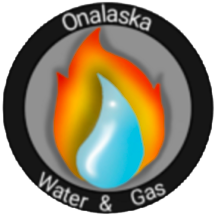PUBLIC EDUCATION - 2008
RECOGNIZE A GAS PIPELINE EMERGENCY
FOR PURPOSES OF REPORTING A GAS PIPELINE EMERGENCY
WHAT IS AN EMERGENCY?
A gas emergency - involves gas facilities or operations which may endanger human life (including yours), damage property or equipment, or disrupt normal gas service to customers.
IN AN EMERGENCY, THE SAFETY AND WELFARE OF PEOPLE MUST ALWAYS BE FIRST PRIORITY
GENERAL STATEMENT
This emergency plan provides a format of essential data for any person to follow in an emergency situation. No emergency plan can cover all situations, therefore, there is no substitute for sound judgment of the person or persons involved.
An emergency condition exists when it is determined that an extra ordinary response, for equipment, manpower or supplies must be utilized to protect public safety, or our facilities from existing or potential hazards. Hazards include:
- Large amounts of escaping natural gas
- Fire, explosion, etc.
- Any leak considered hazardous
- Any danger to major segments of the pipeline system
- Natural disasters (floods, hurricanes, earthquakes, etc.)
NOTE: ALL REPORTS OF LEAKS INSIDE DWELLINGS OR PUBLIC PLACES GET TOP PRIORITY
TO REPORT A PIPELINE EMERGENCY: CALL "911" OR ANY EMERGENCY FACILITY PHONE NUMBER LISTED IN THIS INFORMATION LETTER
POTENTIAL EMERGENCIES
- Over pressure of the system
- Large amounts of escaping gas
- Fire, explosion
- Any leak considered hazardous
- Any danger to major segments of the system
- Natural disaster (floods, tornadoes, hurricanes, earthquakes, forest/prairie fires)
MAKE-SAFE PROCEDURES:
For any gas source, you must make the area safe for the public and stop the gas release. This includes:
- Immediate action to protect life and property
- Problem assessment and notification
- Evacuation considerations
- Repair activities
- Reestablish service
SUMMARY: IMPORTANT THINGS TO REMEMBER:
- An emergency is any situation that endangers life, may damage property, or disrupts customer service
- First-response activities are aimed at saving lives, preventing injuries, and protecting property.
- Mitigation methods decrease the likelihood of an accident or injury.

